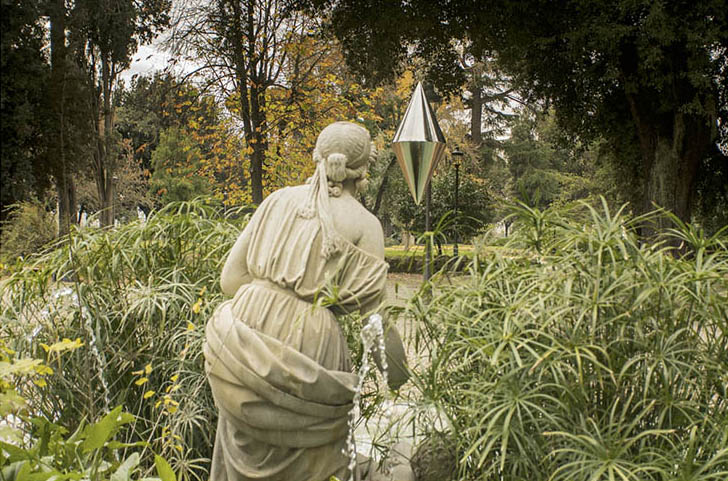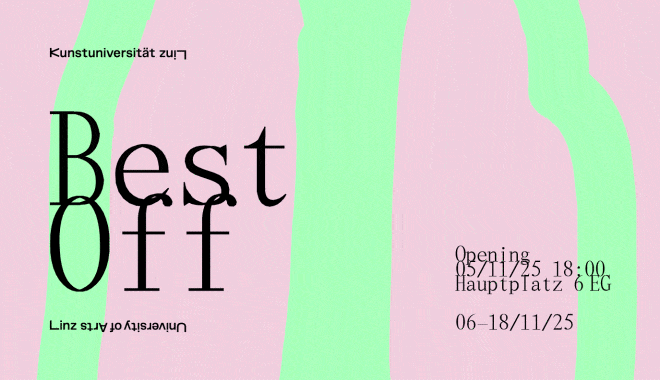
I really enjoyed looking into your digital archive. It’s incredible the documentation that you are carrying. Therefore I wanted to ask you about the role of archiving work.
I’m glad you enjoyed it, I also need it to find pieces of my story. Sometimes I also get lost in my website to review what I have done. I have archived the photos of the exhibitions and works from the very beginning. Initially, I followed the advice to catalog the material on the recommendation of friends, artists and curators. With more experience then, over the years in addition to continuing the cataloging, I began to take more possession of the photographic shooting technics to catch both the art-works and the installations. In recent years, I have taken test photos, and then I have followed professional photographers in their final shot, also because the most interesting idea lately is also to use the photos of the installations as artworks themselves, as well as for catalogs and publications.

You were born in San Donato Milanese, and you lived in Cernusco, around Milan. What was your childhood like in this place?
I attended all my studies, from childhood to university in Milan, but I grew up in a small town in the Milano province – Cernusco sul Naviglio, on the banks of the Naviglio Martesana. I have happy memories of the period I lived in Cernusco, memories of meadows and light in the eyes. After school, we were a group of friends always cycling around the fields, extremely free and adventurous. We were a good group of little wild boys, my parents always left me a lot of freedom, and the city was safe. I remember my beautiful bike: a mountain bike with front springs and 21 gears, a real missile to go into the quarries to make the jumps. I remember the canal that in spring plowed the meadow where the weeping willow caressed it. In retrospect, it could be like a small English landscape or a little – I can imagine it now – like the landscape of the „Grad Jatte“ of Seurat. Then I remember the scooter in high school and the possibility of moving independently towards Milan. I would say that the whole panorama has changed there, the world to discover was the city. I currently live in Milan just outside the circle, 10 minutes from the center, near a large park which is a source of energy and relaxation for my family and me.
As you were entering the theme of the Academy, I would like to ask you if you could tell us something about your times at Brera.
At the Academy, the days were lively and full. In Professor Gallerani’s Sculpture classroom, a lot of plaster, clay and iron were worked and then running around to the vernissages, still dirty with dust and smudges on the clothes. As much as it is denigrated by many, I am grateful the Academy has directed me to an attitude where making sculpture has become a daily practice. In the last years of the Academy, I also remember the great conquest of my first independent studio in Milan, 25 square meters of pure freedom and necessary autonomy, with many efforts and sacrifices to pay for it.

Matteo Negri, AMORI ESTIVI (LETTURE) 
Matteo Negri, 2018, Navigator Roma, 10×15 cm – Stampa digitale su carta Fine Art Prestige
Alberto Mattia Martini, in the context of the exhibition „Dis-moi une chose“ (Galleria Melzi Fine Art, Milan, 2015), says the following about your work: „The first step regards attention, intended as an element, an object or an idea Matteo is attracted by. Negri’s decision to concentrate on a certain research comes from the appeal “something” has on his mind. To better understand this, let’s go back to when Matteo Negri was “recycling”. He was collecting objects found in incredibly various places, as if he wanted to investigate their previous lives to then give them another chance with an artistic identity.“ Can you elucidate a bit on these discoveries? What captivates you today?
Of all the senses I certainly prefer the sight: to watch/to see /to observe. Reflecting, I have always had a strong attraction for material things, almost a feeling of transport for certain objects. And therefore also for the materials. In the text you quoted, reference is made to a precise period, those that are defined as the beginnings. In the academy I worked some simple materials such as stone and plaster and along the roads that led to the academy in the morning I passed by some scrap yards and landfills. There was a strong link between the exhausted but strong matter and the still attractive forms left to perish. They are bonds that cannot be explained, but for me they are immediate feedback, the idea materializes in a form almost immediately. I started working on stone scale reproductions of dishwasher carburetors and pumps and I had a lot of fun. It was my first series. Lately, I have been more attracted to physical processes in which light is reflected through a material or surface, and with it the image is transported, phenomena that change the environment and space through new forms, even immaterial ones.
I find the water and the sea very intriguing, and I spend hours in the summer underwater diving in apnea to discover the seabed in a weightless and timeless stasis.

Public space and its role in your work (thinking here of works of you such as Place du Palais Royale Double, Noeud 3)?
Space is for me a catalyst of ideas. It has happened to me several times that a project changes completely due to the relationship with the space in which it was intended to be. In the case of Paris, in 2011 there was the opportunity to be able to exhibit in some squares of the city through the invitation of the Marie 1ere arrondissment, following a visit to my exhibition which was set up at Galerie 208 by Patricia Chicheportiche on Blvd Saint Germai in Paris. My idea was to bring the sculptures with knotted macro-lego in some squares, so I tried to identify what could be possible locations, compatibly with the possibilities offered by the municipality, using a criterion of aesthetic- architectural affinity, looking for synergies and contrasts between the works and the monuments, between the verticality of my forms and the horizontality of the square, as well as between the colors of the buildings and the colors of the works. I worked on the opposite of the monument, trying to activate the spaces with my elements and trying to ensure that my works were in turn re-activated by this unprecedented confrontation. I think it is perhaps the constant of my research, a challenge to the rhetoric of the sculpture vision.
What importance do words and literature have in your work?
In the artistic field, I really appreciate art publishing as well as magazines. Specifically, I don’t use the word as an instrument of artistic expression but I work and have worked with numerous critics. I love when critics write for my exhibitions; receiving their texts is something that still excites me a lot, although I understand that what they write is part of a professional and work commitment, I find them rare gestures of love.
How you deal with uncertainties?
I try not to be seized by doubts looking at things as they are and not as I would like them to be.
What are the upcoming projects that you are expecting/planning?
I really hope to be able to return to work on the territory with my environmental installations. Like in 2021, I did in the exhibition in Cannobio, where thanks to the invitation of the Councilor and the Municipality, I interacted with the architecture of the city, creating a dialogue between light / space / volume that galvanized me.
Matteo Negri – www.matteonegri.com, https://www.instagram.com/teonegri.teonegri/?hl=it
About the Interviewer: Erka Shalari (*1988, Tirana) is a Vienna-based art author. She focuses on discovering emerging artists, unconventional exhibition spaces, and galleries that have deliberately broken new ground in their working methods. In this regard, she relies on unorthodox publishing practices, coupling these with a nonchalant manner of writing. The work oscillates between articles for magazines, exhibition texts and press releases – https://linktr.ee/erkashalari
Note: Supergiovane (*2018) is a project born in Milan by four independent Italian artists, Matteo Negri is part of it. The project aims the ‚incubation and acceleration of super ideas of young artists– https://www.supergiovane.com





